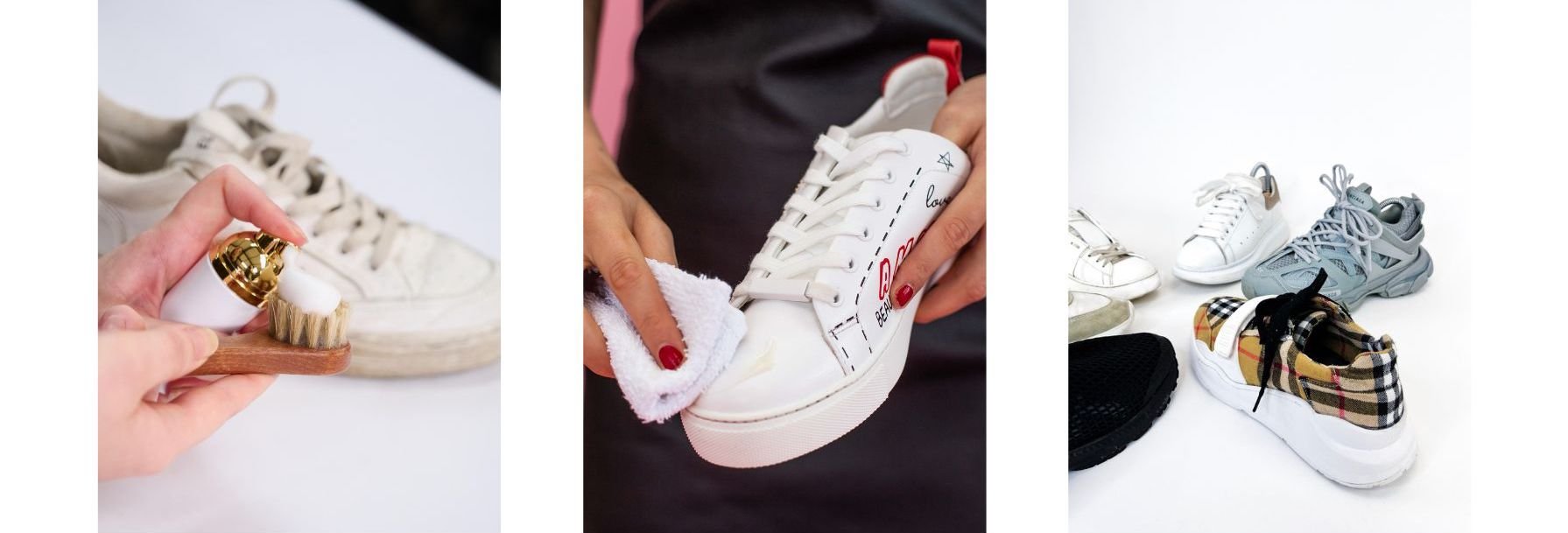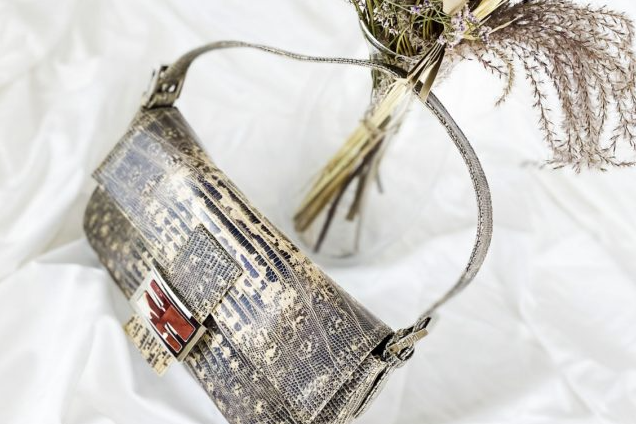How to Keep Your Luxury Trainers in Style
If you have spent hundreds (or thousands) of pounds on designer limited edition trainers, we’re certain you’ll want to keep them looking their best.
And while we offer a specialist Luxury Trainer Cleaning Service, we know that trainer care at home is becoming increasingly popular. But as experts in the field, we need to stress that you always proceed with caution.
You need to have the right tools and products to start. We’ve seen a significant increase in the number of trainers being sent in that initially only required a small £50 fix, but because they have used the wrong products and pressure when cleaning, they need significantly more work. Sadly, many of the online ‘hacks’ are downright bizarre and can cause significant damage that’s costly to repair.

So here we give you our top tips to get the most longevity out of your trainers:
1. Protect your trainers from Day One
Footwear works hardest of all when it comes to wear and tear. So, before you christen a box fresh pair with a night out, The Handbag Clinic recommends you protect your trainers from day one with a weatherproofing protection treatment - preventative care is the best care. You will then need to keep on top of it, which requires regular maintenance rather than a quick fix.
If your shoes are getting frequent wear, you should get a top up protective treatment every 2-3 of months. If they’re used for special occasions, every 3 – 6 months will be enough. You can keep on top of this at home with a specialist weather protection spray for fabrics and suede and a leather rejuvenating cream for leather.
2. Regular cleaning (inside and out) and a good old-fashioned polish
Leather is a skin and will absorb bacteria, oils and dirt so ensuring this doesn’t build up to the point that restorative work needs to be done is also key. Be sure to get regular cleaning treatments and have the right products at home to continually care for your shoes. A brush or a spray goes a long way! A slick of polish can also work wonders for helping your trainers to remain supple so they don’t dry out and start to crack.
Keep on top of these conditioning treatments at home and apply every 3 months depending on usage, or when you notice they’re looking a little parched. Be sure to buff the leather and don’t be tempted to use on vegan or nubuck leather – if in doubt, get in touch with us for expert advice.
Trainers are naturally very bacteria prone, which is the number one cause of nasty odours, so cleaning inside the shoe is key for keeping this at bay. We recommend using its specialist fabric or leather cleaner regularly on the insoles.
3. Invest in the best products for trainer care at home
Having the right cleaning and protective products on hand is vital. We have our own patented Care Kits designed to create a professional finish for a choice of leather, suede or fabric items. These are specially designed to combat harmful elements that cause problems for trainers such as spillages/liquid, general wear and tear and ink. The Care Kits come with everything you need including sponges, cloths and a brush in the suede kit so you have all the tools required to keep your trainers looking as good as new.
4. Always use a shoe tree or infill in between wears
Investing in a wooden shoe tree is a highly effective way to retain shape and allow the leather to breathe whilst preventing creasing. Creasing is a common complaint with trainers, and not something that can be repaired - there is no Botox for shoes! Shoe trees stretch the shoes to their original size and also absorb any sweat / moisture which can age your shoes and create unpleasant odours. In the absence of a shoe tree, you can stuff your trainers with tissue paper as an alternative – be sure to be generous and pad out the trainers as much as possible.
5. Store your trainers correctly to avoid bacteria growth
Between wears, trainers should always be stored in a cool, dry place – away from direct sunlight or moisture. Shoes are naturally very bacteria prone, which is the number one cause of nasty odours, so they should always be stored in breathable conditions – ideally with a shoe tree which absorbs sweat and moisture. You should also keep your trainers in their dust bag to prevent dust, potential scratches, and dye transfer from other items.
6. If the worst should happen…
If you accidentally stain your trainers there are some steps you can follow to reduce this and ensure that it causes as little damage as possible before handing it over to the experts. Do not apply water or any cleaning products you may have to hand - you will at this point only make the staining worse. Instead, start by blotting the stained area as soon as possible with a clean, dry cloth or tissue - you want to absorb as much of the liquid as possible.
Once you have removed the excess liquid, you should then blot the stained area with a damp cloth or tissue using warm water only. Start at the outside of the stain and work inwards; this will stop the stain from spreading outwards. The most difficult stains to remove from white shoes are dye transfers and ink-coloured stains because they tend to absorb much deeper into the fibres and can dye them. This makes extracting the dye a much more complex and challenging process. This is as white is the weakest pigment of them all, meaning the dye may reappear after being treated and the stain removal process may need to be repeated.
If you would prefer an expert’s touch, discover all our shoe cleaning and protection services here.
You can also request get a free online quote today.



